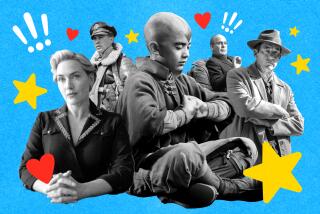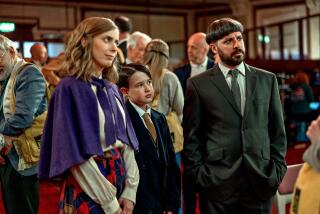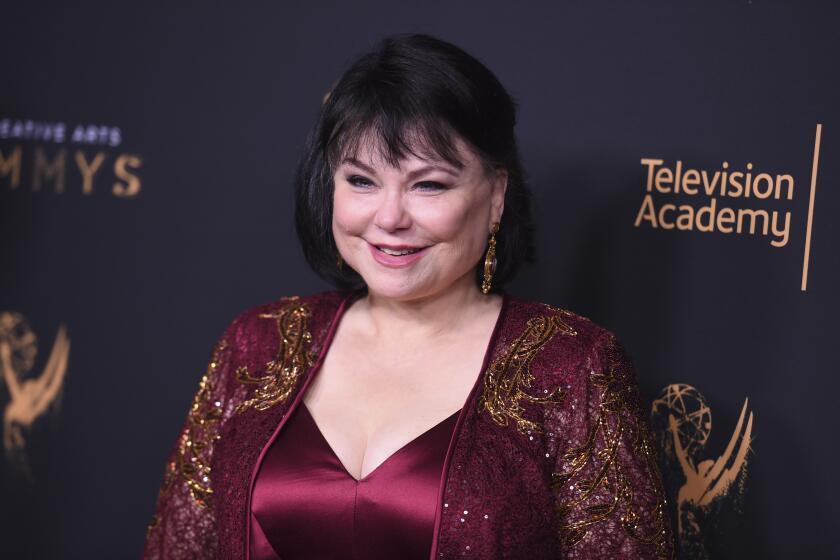TV Preview: Fall TV shows bring about a family reunion in the living room
Families of the world, unite. It’s safe to return to the television, together.
For years, television has been criticized by many for being too violent, too sex-obsessed, too adult. The official “family viewing hour” disappeared in 1977, and by the turn of the last century, even the idea of the 9 p.m. hour as kid-friendly had disappeared as well.
On cable, and then the broadcast networks, nighttime series became increasingly dark and “adult” (i.e. graphic) while the children of the house were sent off to Disney Channel, Nickelodeon or ABC Family. Network execs might publicly wring their hands over the proliferation of screens and target-marketing that threatened to dismantle the electronic hearth, but most of the shows greenlighted seemed designed to keep family members equal but separate.
TV preview 2014: Full coverage
Lately, however, that’s begun to change. Even as TV moves further into its Age of Exploration, pushing past the historic boundaries of content, form and delivery, the new fall season strengthens the broadcast networks’ already noticeable return to their roots: family-inclusive programming.
There’s still plenty of sex, gore and darkly fatalistic/highly satiric themes to go around, of course, but there are also, increasingly, a number of shows that seem geared toward uniting the ages.
“The Flash” pairs up with “Arrow” on CW, “Gotham” joins “Sleepy Hollow” on Fox, where another new drama, “The Red Band Society,” is clearly aimed at the “Fault in Our Stars” YA crossover audience.
ABC brings the “Frozen” sisters to “Once Upon a Time” and explores time-travel via the universally popular issue of immortality in the new “Forever.” Mid-season, it will bolster “Marvel’s Agents of S.H.I.E.L.D.” with “Agent Carter” and stun the world with the musical comedy fairy tale “Galavant.”
Even CBS’ “Scorpion,” a classic misfit-crew-saves-the-world, skews young with high-tech-meets-autism themes.
And though none of the new comedies competes with the nuclear family and extended traditions of “Modern Family” and “The Middle,” most address issues that seem tailored to bonding the generations — the title “Selfie” alone says it all, while “A to Z” is an echo of the popular demo-crossing film “(500) Days of Summer.”
As many of the titles suggest, the recent ascendancy of comic book culture and fantasy has a lot to do with broadcast television’s recent attempts at wider audience appeal. The enormous success of “Iron Man” and “The Avengers” brought Marvel and DC Comics to the flat screen while “The Lord of the Rings” and “Harry Potter” allowed shows like “Game of Thrones,” and its more PG siblings (“Grimm,” “Once Upon a Time,” “Sleepy Hollow”) to nudge their way into lineups once chockablock with police and medical dramas.
With their alternate universes and often wildly imagined characters, graphic novels and fantasies allow the cinematic imagination to spread out instead of just spiraling down — the ravaged landscapes are actual countries, not a serial killer’s psyche, the wars fought between good and evil, not just flawed police officers and equally flawed criminals. Women, children, the elderly are all allowed complexities and power still often denied them in contemporary dramas.
The growing popularity of young-adult fiction has had a similar affect, making way for more science fiction and post-apocalypse narratives, many of which also feature a highly diverse group of protagonists (and a propensity for archery).
More important, these populist genres, easily sustained within PG or PG-13 ratings, offer the broadcast networks, with their advertising-driven schedules and FCC standards, an obvious clever way to compete with their more liberated cable and streaming peers: Don’t.
After HBO’s double-punch of “Sex and the City” and “The Sopranos,” the Big Four spent far too many years attempting to match cable’s graphic tone, filling the airwaves with grim crime procedurals and sexy workplace soaps. Some of these were quite successful, but the trend itself backfired.
Try as they might, the broadcast networks couldn’t go toe-to-toe with all the prestige perks of a hard R, and soon the darkness of prime time made the growing number of age-specific networks like Disney Channel, ABC Family and the CW seem not just novel but necessary.
Meanwhile, technology offered the next-generation experience: Left to their own devices, kids watched TV on ... their own devices. Phones, computers, gaming systems. Though some families found weekly solidarity around reality programming — “American Idol,” “The Amazing Race,” “Duck Dynasty” — television viewing in many households became an increasingly splintered if not solitary pursuit.
Lately, however, the Big Four seem to be wooing the family back to the flat screen, whether in real time or at their DVR-ed convenience. Aided by astonishing computer graphics and the constant emigration of heavy hitters from film, broadcast television is finally chasing not the shock value of cable but the sophistication of its writing and its willingness to experiment.
The idea of a show in which Washington Irving’s timid schoolmaster Ichabod Crane was resurrected as a demon-fighting former Colonial war hero sounded ridiculous until “Sleep Hollow” became one of last fall’s bona fide hits.
Is this your grandmother’s family hour? Of course not.
Increased exposure to all manner of media has ramped up the sexuality, violence and gray-area morality of most storytelling. But the return of the heroic hero, including Nathan Fillion’s ruggedly handsome “Castle” with his three-generation household and the iconic teams of “S.H.I.E.L.D.” as well as “The Flash” and “Gotham” represents a return to storytelling your grandmother would certainly recognize, and possibly enjoy, along with you and the grandkids.
Even if they won’t stop looking at their phones while they watch TV.
More to Read
The complete guide to home viewing
Get Screen Gab for everything about the TV shows and streaming movies everyone’s talking about.
You may occasionally receive promotional content from the Los Angeles Times.







